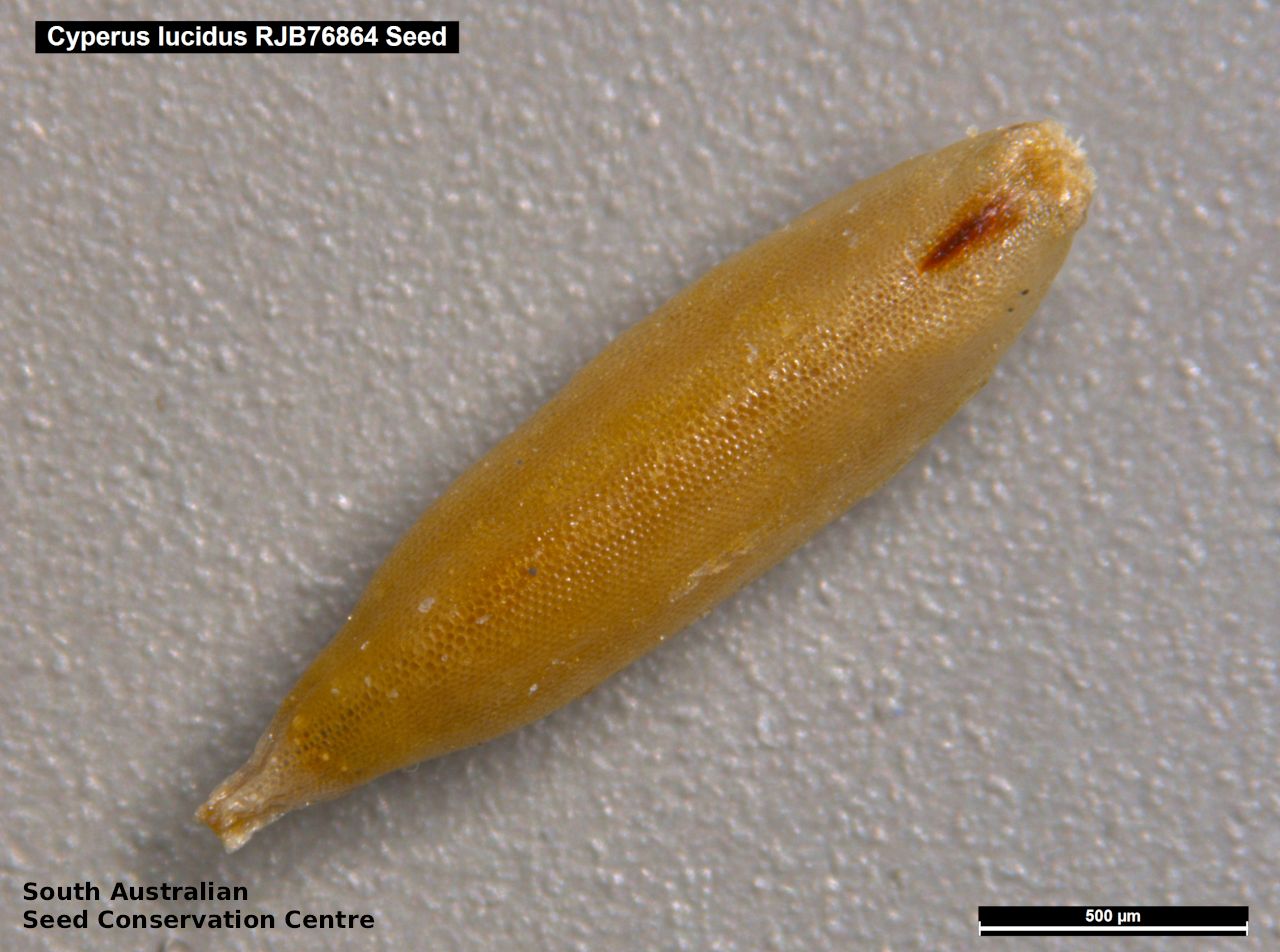









Common names
Leafy Flat-sedge
Etymology
Cyperus from the Latin 'cyperos' and derived from the Greek 'kypeiros', an ancient Greek name used by Homer and Theophrastus for several plants of this genus. Lucidus from the Latin 'lucida'' meaning shiny, alluding to the glossy leaves.
Distribution and status
Found only in the lower South-east in South Australia growing on the banks of the Glenelg River. Also found in Queensland, New South Wales, Victoria and Tasmania. Native. Very rare in South Australia. Common in the other States.
Herbarium region: South Eastern
AVH map: SA distribution map (external link)
Plant description
Tufted perennial sedge to 1 m or more high. Stems fairly robust, trigonous, smooth. Leaves often longer than the stems; flat or channelled, with numerous short transverse septa showing as shallow ridges on the surface (septate-nodulose); to c. 13 mm broad, scabrid on the margins; bracts 3-6, similar to the leaves, the lower longer than the inflorescence. Flower-spike an umbel, compound; rays rigid, up to 12, to 20 cm long; spikelets rather numerous in dense globose or cylindrical spikes to 5 cm long; rich-brown, linear or somewhat lanceolate, 5-10-flowered, flattish, acute; 5-12 mm long, less than 1 mm broad; rhachilla winged; glumes not closely arranged, tightly appressed or the tips spreading; acute in profile, with the keel nearly straight or slightly curved inwards distally, with 2 or 3 veins on each side, c. 4 mm long; stamens 3; style 3-branched. Flowering bewteen October and February. Fruits are flat, reddish brown fruit-head in dense clusters. Seeds are brown oblong seed to 2.5 mm long and 0.7 mm wide. Seed embryo type is capitate.
Seed collection and propagation
Collect seeds between December and April. Collect fruits by picking off the mature heads, those turning reddish brown and come-off easily. Place the heads in a tray and leave to dry for one to two weeks. Then rub the heads with a rubber bung to dislodge the seeds. Use a sieve to separate any unwanted material. Store the seeds with a desiccant such as dried silica beads or dry rice, in an air tight container in a cool and dry place. From one collection, the seed viability was high, at 90%.
| Location | No. of seeds (weight grams) | Number of plants | Date collected | Collection number Collection location | Date stored | % Viability | Storage temperature |
|---|---|---|---|---|---|---|---|
| BGA MSB | 36,400 (8.2 g) 36,400 (8.2 g) | 3-Jan-2008 | RJB76864 South Eastern | 19-Sep-2008 | 90% | +5°C, -18°C |
Number of plants: This is the number of plants from which the seeds were collected.
Collection location: The Herbarium of South Australia's region name.
% Viability: Percentage of filled healthy seeds determined by a cut test or x-ray.